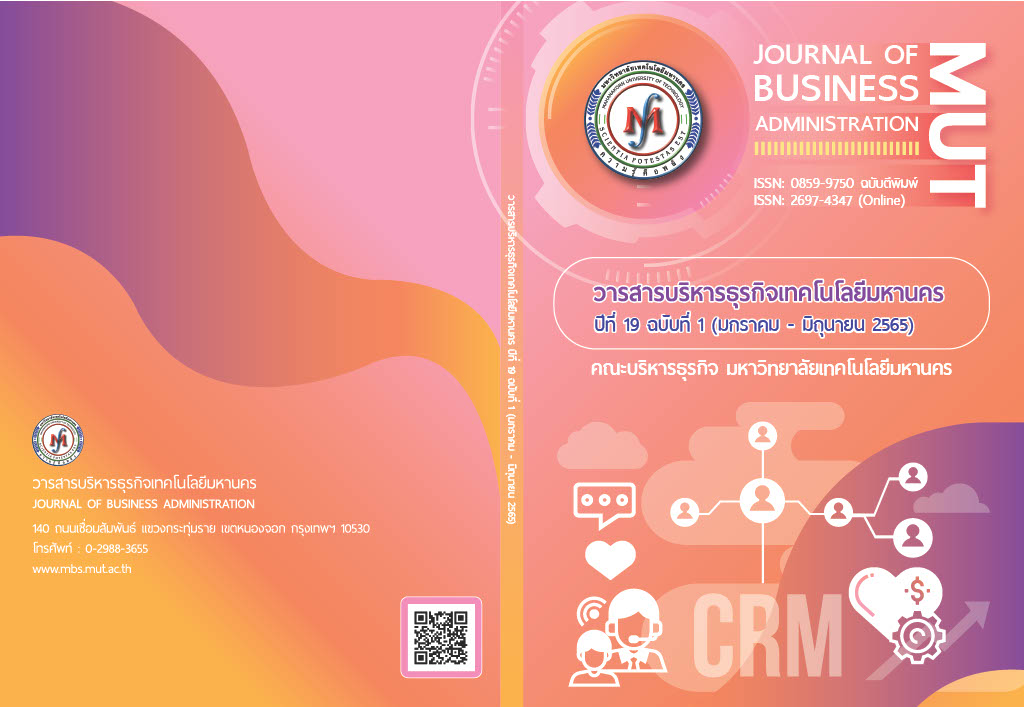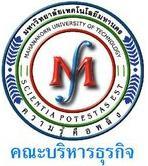Determining an Appropriate Sample Size and Power of Test with Strength Degree of the Relationship between Variables in the Structural Equation Modeling
Keywords:
Structural Equation Modeling, sample size, power of test, relationship strengthAbstract
When researchers apply structural equation modeling (SEM) technique, sample size issue is involved. The researchers are uncertain about how to calculate sample size and how many subjects for high confidence in the accuracy of the research. This paper aims to highlight the key points that should be considered when calculating sample size applying structural equation modeling techniques. The paper demonstrates the results of testing population parameters fewer than 7 different sample sizes conditions and determines the 3 strength degrees of correlation between variables to find accuracy sample size that power of test exceeded 0.80. The study founded that (1) an appropriate sample size for the measurement models with moderate and high correlation between latent variables was at least 150 samples, (2) the structural equation modeling without mediate latent variables and the relationship between exogenous variables was moderate; the appropriate sample size was not less than k(k+3)/2, where k was the number of observable variables, and (3) the structural equation modeling with mediate latent variables and the relationship between exogenous latent variables were at moderate and high level, the appropriate sample size was not less than 20 subjects per observed variables.
References
วัลลภ รัฐฉัตรานนท์. 2562. การหาขนาดตัวอย่างที่เหมาะสมสำหรับการวิจัย: มายาคติในการใช้สูตร ของทาโร ยามาเน และเครจซี-มอร์แกน. วารสารรัฐศาสตร์ปริทรรศน์ มหาวิทยาลัยเกษตรศาสตร์. 6 (1) 24 – 40.
พูลพงศ์ สุขสว่าง. 2556. โมเดลสมการโครงสร้าง. กรุงเทพฯ: โรงพิมพ์วัฒนาพาณิช จำกัด.
Anderson, J. C., & Gerbing, D.W. 1984. The effect of sampling error on convergence, improper solutions, and goodness-of-fit indices for maximum likelihood confirmatory factor analysis. Psychometrika. 49 (2) 155–173. https://doi.org/10.1007/BF02294170
Browne, M. W. 1984. Asymptotically distribution-free methods for the analysis of covariance structures. British Journal of Mathematical and Statistical Psychology. 37, 62 - 83. https://doi.org/10.1111/j.2044-8317.1984.tb00789.x
Hair, J.F., Black, W.C., Babin, B.J. and Anderson, R.E. 2010. Multivariate Data Analysis (7th Ed). Pearson, New York.
Hoe, S. L. 2008. Issues and Procedures in Adopting Structural Equation Modeling Technique. Journal of Applied Quantitative Methods. 3 76 - 83.
Kline, R. B. 2010. Principles and practice of structural equation modeling. (3rd ed.) Guilford Press, New York.
Muthén, L. K., & Muthén, B. O. 2002. How to use a Monte Carlo study to decide on sample size and determine power. Structural Equation Modeling. 9 599–620. https://doi.org/10.1207/S15328007SEM0904_8
Chiang, I-C.A., Jhangiani, R.S., & Price, P.C. 2015. Research Methods of Psychology.
(2nd ed.) Canadian Edition. Victoria, B.C.: BCcampus. Retrieved March 25, 2022
from https://opentextbc.ca/researchmethods/
Raykov, T., & Marcoulides, G. A. 2006. A first course in structural equation modeling.
(2nd ed.) Mahwah, NJ: Erlbaum.
Singh, K., Junnarkar, M., & Kaur, J. 2016. Measures of Positive Psychology, Development and Validation. Berlin: Springer. https://doi.org/10.1007/978-81-322-3631-3
Schumacker, R. E., and Lomax, R. G. 2004. A beginner's guide to structural equation modeling. (2nd ed.) Lawrence Erlbaum Associates Publishers.
Tabachnick, B.G. and Fidell, L.S. 2007. Using Multivariate Statistics. (5th ed.) New York: Allyn and Bacon.
. 2013. Using Multivariate Statistics. Boston, MA: Pearson Education Inc.
Uttley, J. 2019. Power Analysis, Sample Size, and Assessment of Statistical Assumptions.
The Journal of the Illuminating Engineering Society. 15 (2 - 3) 1 - 20. https://doi.org/10.1080/15502724.2018.1533851
Wilkinson, L. and the Task Force on Statistical Inference. 1999. Statistical Methods in Psychology Journals: Guidelines and Explanations. American Psychologist. 54
- 604. https://doi.org/10.1037/0003-066X.54.8.594
Rathachatranon, Wanlop. 2019. Determining an Appropriate sample size for social science research: The Myth of using Taro Yamane and Krejcie & Morgan Method. Political Science of Kasetsart University Review. 6 (1) 24 – 40. (In Thai)
Suksawang, Poonpong. 2013. Structural equation modeling. Bangkok: Printing house wattanaphanit. (In Thai)
Downloads
Published
Issue
Section
License

This work is licensed under a Creative Commons Attribution-NonCommercial-NoDerivatives 4.0 International License.
ข้อความ ข้อคิดเห็น ข้อมูล เนื้อหา รูปภาพ แผนภูมิ แผนผัง เป็นต้น ที่ปรากฏและแสดงในบทความต่างๆ ในวารสารบริหารธุรกิจเทคโนโลยีมหานคร ถือเป็นความรับผิดชอบโดยตรงของผู้เขียนบทความนั้นๆ มิใช่เป็นความรับผิดชอบใดๆ ของวารสารบริหารธุรกิจเทคโนโลยีมหานคร และมหาวิทยาลัยเทคโนโลยีมหานคร
บทความที่ตีพิมพ์ในวารสารบริหารธุรกิจเทคโนโลยีมหานคร ถือเป็นลิขสิทธิ์เฉพาะของคณะบริหารธุรกิจ มหาวิทยาลัยเทคโนโลยีมหานคร หากบุคคลหรือหน่วยงานใดต้องการนำทั้งหมดหรือส่วนใดส่วนหนึ่งไปเผยแพร่ต่อหรือเพื่อกระทำการใดๆ จะต้องได้รับการอนุญาตเป็นลายลักษณ์อักษรจากคณะบริหารธุรกิจ มหาวิทยาลัยเทคโนโลยีมหานครก่อนเท่านั้น


